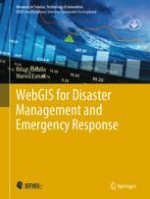2019 | OriginalPaper | Buchkapitel
6. Artificial Intelligence and WebGIS for Disaster and Emergency Management
verfasst von : Rifaat Abdalla, Marwa Esmail
Erschienen in: WebGIS for Disaster Management and Emergency Response
Aktivieren Sie unsere intelligente Suche, um passende Fachinhalte oder Patente zu finden.
Wählen Sie Textabschnitte aus um mit Künstlicher Intelligenz passenden Patente zu finden. powered by
Markieren Sie Textabschnitte, um KI-gestützt weitere passende Inhalte zu finden. powered by
